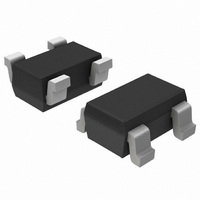NCP698SQ25T1G ON Semiconductor, NCP698SQ25T1G Datasheet - Page 7

NCP698SQ25T1G
Manufacturer Part Number
NCP698SQ25T1G
Description
IC REG LDO 150MA 2.5V SC-82AB
Manufacturer
ON Semiconductor
Datasheet
1.NCP698SQ50T1G.pdf
(9 pages)
Specifications of NCP698SQ25T1G
Regulator Topology
Positive Fixed
Voltage - Output
2.5V
Voltage - Input
Up to 6V
Voltage - Dropout (typical)
0.52V @ 150mA
Number Of Regulators
1
Current - Output
150mA (Min)
Operating Temperature
-40°C ~ 85°C
Mounting Type
Surface Mount
Package / Case
SC-70-4, SC-82-4, SOT-323-4, SOT-343
Lead Free Status / RoHS Status
Lead free / RoHS Compliant
Current - Limit (min)
-
Other names
NCP698SQ25T1G
NCP698SQ25T1GOSTR
NCP698SQ25T1GOSTR
Available stocks
Company
Part Number
Manufacturer
Quantity
Price
Company:
Part Number:
NCP698SQ25T1G
Manufacturer:
ON
Quantity:
12 000
Company:
Part Number:
NCP698SQ25T1G
Manufacturer:
ON
Quantity:
36 000
Figure 1.
Input Decoupling (C1)
recommended and should be connected close to the NCP698
package. Higher values and lower ESR will improve the
overall line transient response.
TDK capacitor: C2012X5R1C105K, or C1608X5R1A105K
Output Decoupling (C2)
require any specific Equivalent Series Resistance (ESR) or
a minimum output current. Capacitors exhibiting ESRs
ranging from a few mW up to 10 W can thus safely be used.
The minimum decoupling value is 0.1 mF and can be
augmented to fulfill stringent load transient requirements.
The regulator accepts ceramic chip capacitors as well as
tantalum devices. Larger values improve noise rejection and
load regulation transient response.
TDK capacitor: C2012X5R1C105K, C1608X5R1A105K,
or C3216X7R1C105K
Enable Operation
and turn off the regulator when pulled low. These limits of
threshold are covered in the electrical specification section
of this data sheet. If the enable is not used, then the pin
should be connected to V
Hints
wide. When the impedance of these lines is high, there is a
chance to pick up noise or cause the regulator to
malfunction.
capacitor, as close as possible to the circuit, and make leads
as short as possible.
Thermal
necessary to provide some thermal relief. The maximum
power dissipation supported by the device is dependent
upon board design and layout. Mounting pad configuration
A typical application circuit for the NCP698 is shown in
A 1.0 mF capacitor either ceramic or tantalum is
The NCP698 is a very stable regulator and does not
The enable pin will turn on the regulator when pulled high
Please be sure the Vin and GND lines are sufficiently
Place external components, especially the output
As power across the NCP698 increases, it might become
in
.
APPLICATIONS INFORMATION
http://onsemi.com
7
on the PCB, the board material and also the ambient
temperature effect the rate of temperature rise for the part.
This is stating that when the devices have good thermal
conductivity through the PCB, the junction temperature will
be relatively low with high power dissipation applications.
given by:
maximum 125°C, then the NCP698 can dissipate up to
250 mW @ 25°C.
from the following equation:
current from the data sheet is 2.5 mA. For an NCP698
(3.0 V), the maximum input voltage will then be 6.0 V.
The maximum dissipation the package can handle is
If junction temperature is not allowed above the
The power dissipated by the NCP698 can be calculated
or
If an 80 mA output current is needed then the ground
350
210
330
310
290
270
250
230
190
170
150
0
P tot + V in * I gnd (I out ) ) [ V in * V out ] * I out
Figure 12. R
100
V inMAX +
PD +
(1 oz Cu thickness)
PCB COPPER AREA (mm
200
qJA
T J(max) *T A
P tot ) V out * I out
vs. Pad Copper Area
300
No pin connected to Cu Plane
Pin 2 connected to Cu Plane
I gnd ) I out
R qJA
400
500
2
)
600
700









